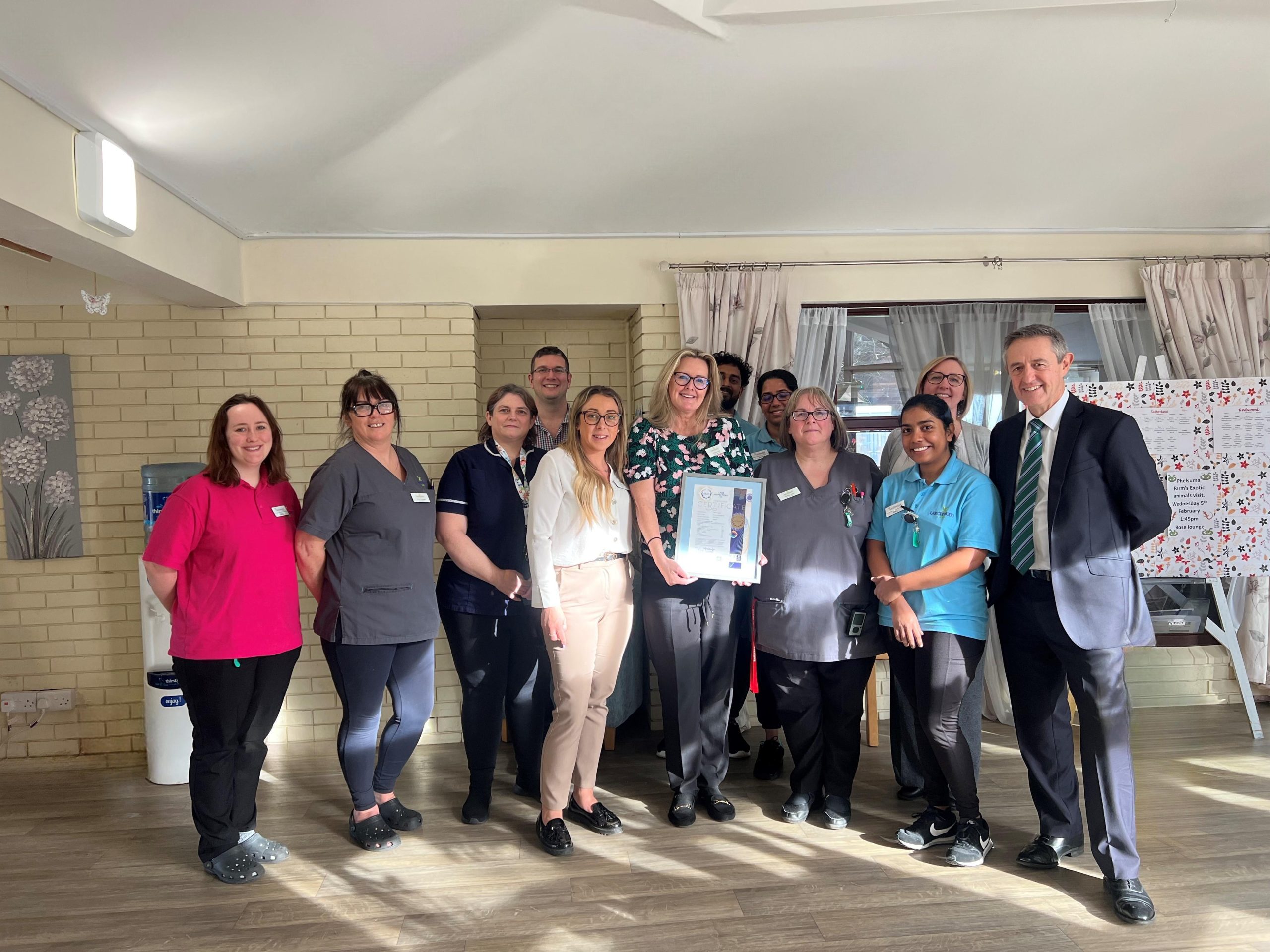[av_heading tag=’h3′ padding=’10’ heading=’LAING & BUISSON Community Care Market news April 2013′ color=” style=’blockquote modern-quote’ custom_font=” size=’25’ subheading_active=” subheading_size=’15’ custom_class=”][/av_heading]
[av_textblock size=” font_color=” color=”]
CCMnmeets… Healthcare Management Solutions Chief executive of insolvency consultancy and care home operator Healthcare Management Solutions Tony Stein explains how the groups’ various functions marry up and gives CCMn an update on the sector’s newest major operator Akari Care.
Q – Could you tell us a little of the background and history of Healthcare Management Solutions (HCMS)? How is the business structured? How do the brands Akari Care and Canterbury Care fit into the business?
A – HCMS is structured to provide all of the support services of a large care home operator but with much greater intensity of supervision. We have an operations team comprising regional managers and peripatetic managers, a quality monitoring team, an accounts department, regional auditors, estates department, HR, IT and administration. Our regional managers are responsible for an average of five homes each. This is very low but it should be remembered that many homes that we are operating have a history of poor performance and non-compliance and therefore need a lot of TLC. Our long term management clients benefit from this close attention.
The business is made up of three distinct areas. We have long term management (Akari, Canterbury and others), interim management, often of distressed homes on behalf of insolvency practitioners, and audit and review. The audit and review part of the business is really taking off as operators and banks want an independent view of their businesses which informs management of what potential risks the services might face and what’s needed to turn homes around. Akari Care is one of our long-term management clients. It’s branded in accordance with the wishes of our client. Canterbury Care is the business that we set up just over seven years ago. It comprises 11 homes in Scotland and the north west of England. We have until recently operated it as a completely separate business but it occurred to us that we could streamline the business by making it another long-term management client of HCMS.
Q – Tell us a bit more about Akari Care. How is the business shaping up?
A – The 39 homes have been with us for approximately six months now and all the signs are very positive for the future. We are currently involved in a programme of major refurbishment works around the group to future proof the homes and ensure that they continue to offer excellent care.
Q – We know the Akari homes were originally part of the former Southern Cross portfolio of homes and were then transferred to Bondcare. What happened there?
A – It’s really very simple. The whole sector had to respond very quickly when Southern Cross failed and management arrangements for these homes were put in place to meet this tight timetable. The sector did exactly what was needed at the time to protect service users. One year on from that, and with time to reflect, management felt that HCMS would be better placed to deliver a longer-term management solution and we were awarded the contract.
Q – How hard was it to make a success of these care homes?
A – Operating any homes is a challenge these days. Having said that the management and staff of the Akari homes are incredibly resilient and dedicated to delivering great care. The staff have been through a lot of change in a fairly short time but have worked hard to embrace HCMS and our quite intensive management style. I’m proud of the way that every-one has responded to the changes with genuine enthusiasm.
Q – What are the plans for the future in this area of the business?
A – The plans are to invest heavily in the homes and give the staff a period of stability during which we can improve quality and operating performance.
Q – What is happening with Canterbury Care?
A – Canterbury Care is a central part of our future strategy. It will never grow, however, as we have a stated policy of non-acquisition – we would be seriously conflicted in our review role if we had an eye on growth opportunities. That said, it has been hard growing the HCMS business and continuing to give Canterbury the attention that it used to get. We are fortunate to have a great team of managers and staff and the recent integration into HCMS has brought the businesses closer together again. Canterbury Care operates 11 homes in Scotland and the north west. The homes offer predominantly residential and nursing care from a mix of purpose built and converted properties. All of the homes have been operating for many years.
Q – Those two companies aside what else is HCMS working on? Tell us a bit more about how it works with banks and insolvency practitioners as a consultant.
A – HCMS offers a range of services to banks and insolvency practitioners. This includes carrying out operational reviews, working with existing management to resolve trading, regulatory, contractual or financial issues, and providing a comprehensive management solution.
Q – What issues are being presented to HCMS in its consultancy work at the moment, and what solutions is it finding?
A – There are a number of common themes. Regulatory problems stemming from a much more demanding regulator, contractual problems raised by commissioners looking to secure the highest possible standards of care for ever decreasing real-terms fees, financial difficulties that have arisen through over-gearing and/or from being tied in to what are now punitive interest rates via hedging products, management failings and in some, rare cases, owners looking to find a replacement operator when the existing tenant fails. HCMS is resourced to take on homes at short notice through a nationwide team of regional managers and we also have a number of peripatetic managers experienced in taking control of services with problems. HCMS is able to assess and predict future potential trading performance through careful consideration of client’s needs, staff ability, home location, layout and environment. It isn’t always about cost-cutting. There are many occasions where, in the short term, due to workforce training needs or the intensity of issues that the service is facing, staffing levels and hence costs actually need to increase before sustainable operating levels can be reached. Quality is at the heart of everything and until that is right, the service can never hope to be successful.
Q – HCMS also works with distressed providers – what problems are they coming to the business with? What are the main issues at the moment?
A – One of the biggest single problems that we face when we take over a distressed home is the poor environment. Homes that have struggled for some time are usually in a poor state of repair. When cash is tight the first thing that dries up is investment in the fabric of the home. The homes that we are asked to look at, have often been in a difficult financial position for many years. Something we always urge investors, landlords and operators to do is to act before homes deteriorate and become too expensive to fix.
Q – How can HCMS help these businesses?
A – We bring a phenomenal weight of experience to bear on any home that we’re involved in. There are few situations that we’ve not experienced and we almost always have some member of staff that’s dealt with the situation whatever it is.
Q – HCMS has developed a system to monitor how a provider is doing – can you tell CCMn how this works and what it can help providers to achieve?
A – The IMPaCT audit system is the only system that measures not just against regulation and the essential standards but also against industry best practice. It’s an online system that is constantly updated for anything new that comes up. We have built in all of the experience that we’ve gained reviewing hundreds of services in dozens of different businesses across the country. It’s been written to cope with the different equirements of the Care Inspectorate, the Care Quality Commision and Care and Social Services Inspectorate Wales. The output is in a format that is useable by anyone from the most experienced manager to the least knowledgeable investor. The process typically takes one to two days on site plus a further 10 to 15 days off-site for write-up and review.
Q – Can it help organisations beyond providers, for examples, lenders?
A – One of the biggest issues facing lenders, investors and landlords in the care home sector is the lack of transparency in the quality of services. Loan agreements and leases often require financial management information however homes can be financially very successful but still be closed down as a result of care or quality problems. Castlebeck was a very good example of this. We believe that the IMPaCT audit process should be built into any lending or tenancy arrangement. This would give essential insight into the qualitative aspects of a service which benefits both the lender and the borrower / tenant.
Q – What are the future plans for HCMS?
A – HCMS is constantly developing. Our mission is ‘Care home excellence’ and by achieving this we will continue to build upon our good reputation and this in turn secure the business’ future. The team is highly motivated and enthusiastic. As well as working hard on the homes we are involved in we’re looking to become Investors in People accredited this year. The most important thing after delivery of a top quality service is that we all enjoy what we’re doing.
Picking up the pieces – CCMnmeets Healthcare
Management Solutions chief executive Tony Stein
LAING & BUISSON Community Care Market news April 2013 33
B U S I N E S S C A S E
[/av_textblock]



